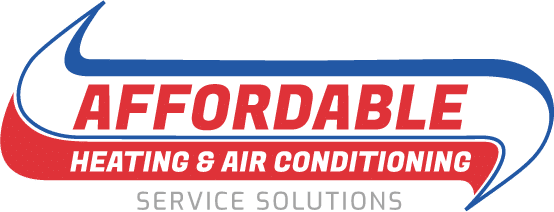Too much moisture in your Richmond, KY, home could leave you with condensation-covered windows, damp drywall, and mold problems. However, having too little can be as problematic. With imbalanced humidity, both your home and your household will suffer. But how can you measure humidity, and what humidity levels should you target? The following is everything you need to know about achieving and maintaining the proper humidity level.
General Recommendations for Indoor Humidity
To ensure acceptable indoor air quality (IAQ) and avoid other moisture-related problems, the United States Environmental Protection Agency (EPA) recommends maintaining humidity between 30% and 50% in the interior of buildings. However, this isn’t a feasible target for all areas. Maintaining 40% to 60% humidity indoors in regions with muggy or arid outdoor conditions is often easier.
How Humid Is Richmond, Kentucky?
Richmond, KY, often sees outdoor humidity levels as high as 81%. Due to its southeastern location, it’s recognized as the 20th most humid state in the nation. Although this isn’t as bad as it could be, it does mean that locals often have a hard time with excess moisture indoors.
How Your Hvac System Helps
In addition to temperature control, central HVAC systems provide limited air filtration and ongoing humidity control. When your air conditioner or heat pump is in action, it cools your living space and extracts excess moisture. This moisture is released as condensation and routed out of your HVAC system’s condensate drain line. Condensing furnaces provide a similar form of humidity regulation during winter.
What Your HVAC System Cannot Do
Although air conditioners, heat pumps, and condensing furnaces can extract excess moisture from the air, they aren’t meant to add additional moisture when needed. During the winter months, this can leave buildings overly dry and cause problems for residents like:
- Irritated nasal passages and sinuses
- Frequent nosebleeds
- Dry coughs
- Sneezing
- Wheezing
Overly dry indoor air can lead to dry skin, irritated eyes, and recurring skin rashes. It’s additionally important to note that homes with dry indoor air tend to have more airborne contaminants. Having a reasonable amount of moisture in your home weighs down airborne particulates like dust, pollen, pet hair, and carpet fibers.
Another major drawback of the humidity regulation capabilities of heaters and air conditioners is their inability to measure indoor moisture. Air conditioners, condensing furnaces, and heat pumps extract moisture from buildings indiscriminately. Thus, they can leave living spaces overly dry if they run too long.
Building Materials and Moisture Balance
Both too much and too little moisture in your indoor air can wreak havoc on building materials. While excess humidity can lead to sagging wood elements, wood rot, and mold, dry air can cause wood baseboards, floors, sub-floors, and furnishings to crack and warp over time.
How To Measure Your Humidity
With 40% to 60% humidity as a reasonable target, one of the easiest and most effective ways to measure your humidity is by installing a smart thermostat with humidity tracking. Smart thermostats are Wi-Fi-enabled learning devices that homeowners can access and adjust remotely. Some models provide detailed IAQ reports, real-time humidity monitoring, and other vital data.
You can also pick up a hygrometer at your local home and hardware store. These units measure water vapor in the air relative to room temperatures. Like smart thermostats, they give accurate, real-time readings, especially when installed in neutral locations like living rooms and dens, rather than high-moisture areas like bathrooms and kitchens.
Schedule an Indoor Air Quality Assessment
Another great way to measure your indoor humidity is by scheduling a professional IAQ assessment. These evaluations identify airborne contaminants, list their concentrations, and measure indoor moisture. You should schedule an IAQ assessment if indoor moisture problems have already led to mold, mildew infestations, or recurring, humidity-related symptoms.
How To Mitigate Indoor Humidity Problems
You may need to hire us to install whole-house dehumidification equipment if you have a naturally humid home. Whole-house dehumidifiers are attached directly to central HVAC ducting. These devices extract excess moisture from conditioned air before it’s distributed.
You can opt for a whole-house humidifier if your home lacks sufficient moisture. These integrated HVAC system accessories are attached to air ducts, and they monitor moisture in the indoor air and add it as needed.
We’re proud to serve Richmond, KY. We offer top-quality heating, cooling, and indoor air quality services. If you need help measuring or balancing the humidity in your home, give Affordable Service Solutions Heating & Air Conditioning a call today.

